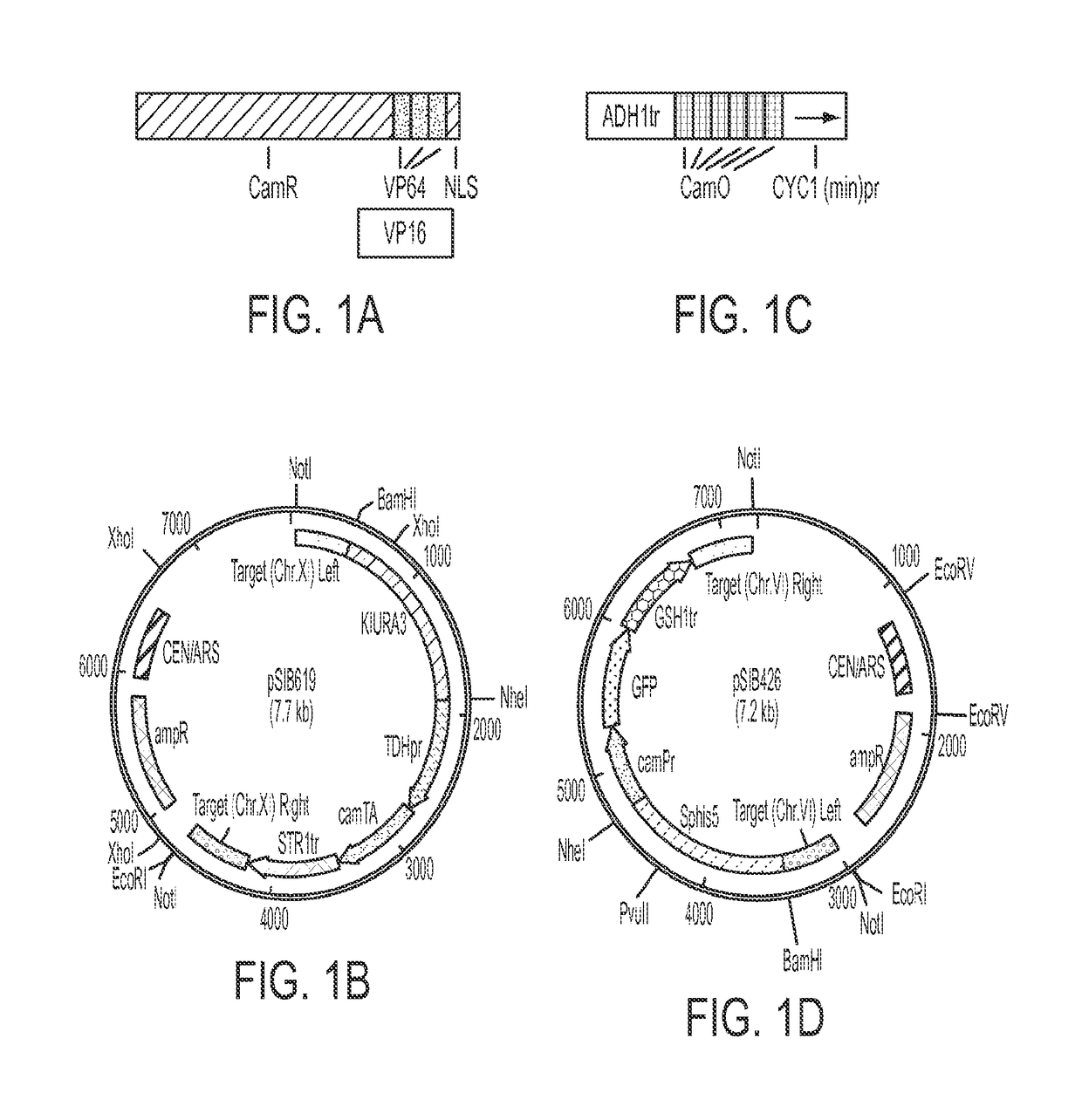Regulated switch for gene expression
a gene expression and gene technology, applied in the field of biotechnology, can solve the problems of slow growth rate or high cost, incompatible with biotechnological applications, and high galactose requirement in the system, and achieve the effect of preventing large-scale fermentation in the industry, and reducing the number of bacterial strains
- Summary
- Abstract
- Description
- Claims
- Application Information
AI Technical Summary
Benefits of technology
Problems solved by technology
Method used
Image
Examples
example 1
Materials and Methods
Media
[0041]Yeast strains were cultured in YPD medium or SD-based media supplemented with appropriate amino acids; fully supplemented medium is referred to as SC; SC missing one component, e.g. adenine, would be labeled SC-Ade. D-Camphor was purchased from Sigma-Aldrich (St. Louis, Mo.), and 5-fluoroorotic acid (5-FOA) was from US Biological (Massachusetts, Mass.). Besides, doxycycline (Dox) was obtained from Clontech laboratories (Mountain View, Calif.). Escherichia coli was grown in Luria Broth (LB) media. In order to select strains with drug-resistant genes, carbenicillin (Sigma-Aldrich), kanamycin (Sigma-Aldrich), or zeocin (Life Technologies, Carlsbad, Calif.) were used at final concentrations of 75 μg / ml, 50 μg / ml, and 25 μg / ml respectively. Agar was added to be 2% for preparing agar-media.
Plasmids
[0042]The TOP10 strain of E. coli (F− mcrAΔ(mrr-hsdRMS-mcrBC) Φ80lacZΔM15 ΔlacX74 recA1 araD139 Δ(araleu) 7697 galUgalKrpsL (StrR) endA1 nupG) was used for the co...
PUM
| Property | Measurement | Unit |
|---|---|---|
| concentrations | aaaaa | aaaaa |
| concentrations | aaaaa | aaaaa |
| concentrations | aaaaa | aaaaa |
Abstract
Description
Claims
Application Information
 Login to View More
Login to View More - R&D
- Intellectual Property
- Life Sciences
- Materials
- Tech Scout
- Unparalleled Data Quality
- Higher Quality Content
- 60% Fewer Hallucinations
Browse by: Latest US Patents, China's latest patents, Technical Efficacy Thesaurus, Application Domain, Technology Topic, Popular Technical Reports.
© 2025 PatSnap. All rights reserved.Legal|Privacy policy|Modern Slavery Act Transparency Statement|Sitemap|About US| Contact US: help@patsnap.com



